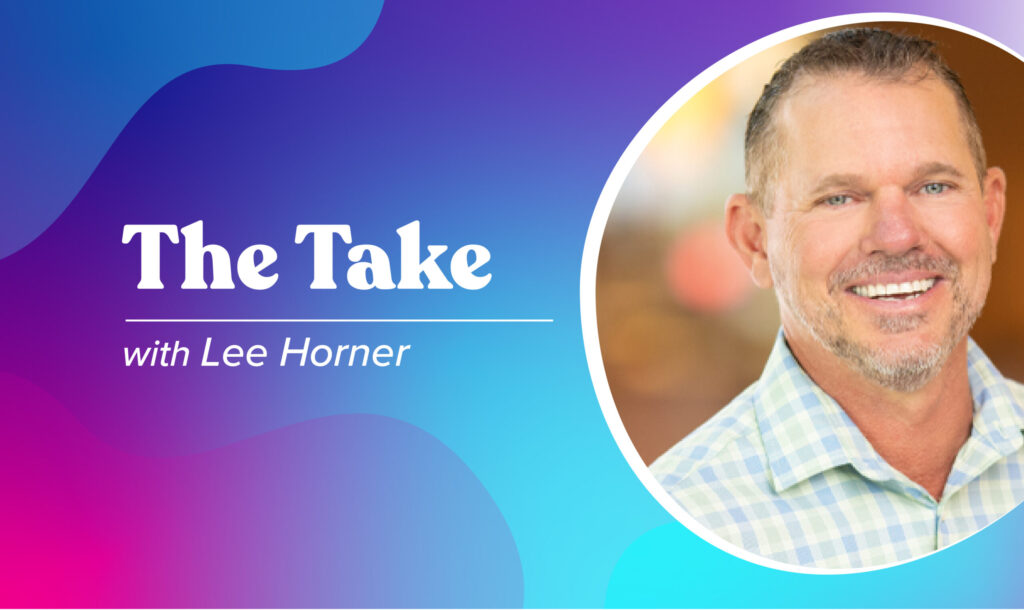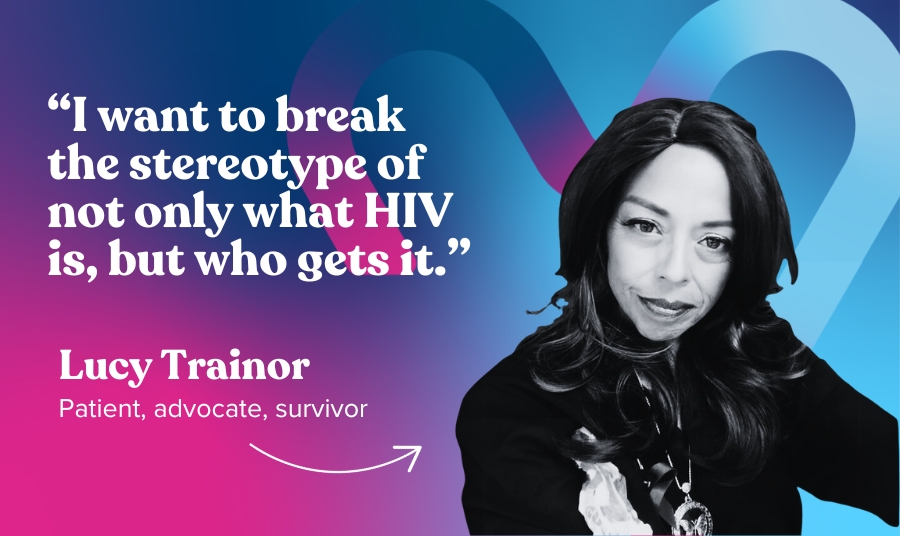During the early stages of the COVID pandemic, telehealth use surged to 78 times higher than pre-pandemic stats as providers and patients sought viable ways to access care in a quarantined world. While the dust has settled since then, experts still forecast that more than 43% of Americans will be regular telehealth users by 2025. In this month’s edition of “The Take,” Avita Care Solutions’ Chief Advocacy Officer Glen Pietrandoni talks with telehealth innovator and Avita Chief Growth Officer Lee Horner. On the agenda? A behind-the-scenes look at health care technology’s exponential growth, how telehealth drives health equity and enhances the patient journey, and why traditional onsite care is still very much in the game.
Glen: For well over two decades, you’ve been combining technology and compassionate care to bring health equity to underserved communities. What changes have you seen over the past 20 years, and how has technology changed the patient journey?
Lee: If you go back to 2007, when the smartphone really came into existence, that was the first introduction of technology to a mobile extent. What we’ve seen since then is a drastic increase in people wanting to conveniently access and communicate about care on an at-need and at-will basis. As we look over the last couple of decades, we’ve had to consider the changing patient mindset regarding their care journey, how they leverage technology, and the best way to build technology that effectively meets their needs.
The internet, and even more importantly, the extension of Wi-Fi and cellular, have allowed us to expand in markets and deliver care in areas we thought were impossible 20 years ago.
In the United States, COVID moved health care technology development forward 20 years in a single year.
Lee Horner, Chief Growth Officer, Avita Care Solutions
COVID’s exponential impact on health care technology
Glen: The COVID pandemic was the first time some patients experienced telehealth. How did that broaden the demand for the advancement of health care technology? Can you ever really go back to offering only brick-and-mortar-based care after people have been exposed to telehealth?
Lee: My take on the pandemic is that, in the United States, COVID moved health care technology development forward 20 years in a single year.
What transpired during the pandemic changed how people thought and what they were willing to accept in terms of care delivery. It’s important to point out that there’s no replacement for a complete health care offering—which includes the use of technology and in-person, brick-and-mortar-based care—because you need the combination of both elements. There’s no silver bullet that completely solves how health care is delivered; different care needs have different requirements.
The pandemic advanced health care delivery by 20 years because it forced people who weren’t as comfortable using technology to do so when they couldn’t see their provider in person. And it required technology companies to take a step back and consider how to better serve the community by supporting a far broader means of technology—for example, accommodating older iPhones and Android devices to extend telehealth to patients who previously couldn’t access it.
Glen: What about covered entities? How did it impact their operations and delivery of care models?
Lee: Number one, the pandemic caused covered entities to revisit their business models and reconsider how they would meet the requirements of delivering care to all. Number two, it required them to examine viable telehealth solutions in the marketplace and weigh the pros and cons of building their own telehealth platform versus partnering with an existing telehealth services provider. They really had to take a step back and say, “How do we best serve our patients?”
What transpired during the pandemic changed how people thought and what they were willing to accept in terms of care delivery.
Lee Horner, Chief Growth Officer, Avita Care Solutions
Leveraging technology to enhance the patient journey and deliver world-class care
Glen: You joined Avita Care Solutions as chief growth officer from Q Care Plus, a community-focused care management solution that offers stigma-free access to telehealth. It’s now a part of Avita and an organization you’re still very much involved in. Tell me about what the team built at Q Care Plus, including not just the development of the platform’s technology but also the focus on personalizing patient care.
Lee: Q Care Plus is constantly evolving as we learn from patients how to build technology that best supports them. The advancements we’ve made there from both a technology and patient journey perspective are the result of following the patients’ lead.
One factor we’ve focused on is keeping the process easy for the patient. It’s important to allow them to go through the enrollment journey seamlessly and be selective as to the type of provider they’re looking for.
We’ve spent a lot of time enhancing Q Care Plus’ patient journey. The most important thing is to deliver world-class care. It’s not just about prescribing a prescription; it’s about examining the total patient experience and offering care that is unique. For example, STI (sexually transmitted infections) treatment is a focus area for us, in addition to PrEP (pre-exposure prophylaxis). But it’s one that many of our competitors don’t offer. The same goes for working with patients who are newly diagnosed with HIV—we make sure we help them get the proper care in their local communities and that they have the resources to be successful in achieving wellness.
All of that is reliant on innovative technology. There’s a whole host of technology Q Care Plus drives on the backend to ensure we’re seamlessly automating the process, communicating effectively with patients, and helping those we care for find the right connections in their communities. We’ve got to stay relevant to patients.
Q Care Plus is not just a telehealth platform; it’s much more than that. We consider the patient, covered entity, and provider journeys. All three must align from a technological perspective, which is much different from most telehealth platforms in the marketplace today.
There's no silver bullet that completely solves how health care is delivered; different care needs have different requirements.
Lee Horner, Chief Growth Officer, Avita Care Solutions
Today’s telehealth has no barrier to entry
Glen: During the pandemic and going forward, many covered entities decided that offering telehealth was critical to building and maintaining their patient bases. What’s your response to community health organizations that feel they just don’t have the resources to support a telehealth option?
Lee: There’s no barrier of entry that should stop an organization from entering the telehealth space. They don’t have to worry about sustaining a large team to support it, because we partner with them to fulfill the end-to-end experience. Q Care Plus helps them market to patients and offers access to culturally competent providers who deliver passionate care. Avita pharmacies, both onsite and offsite, ensure patients receive their medications in the most respectful, fastest, and least financially burdensome way possible. And Avita Care Solutions wraps around all these service offerings and helps covered entities expertly navigate the 340B program, so they can get back to focusing on their missions.
Of course, there are organizations that have made investments in their own telehealth platforms. And while I absolutely encourage them to do that, there are some unique advantages to working with a telehealth partner like Q Care Plus. As I mentioned before, we can help them build their community focus and engage patients, both for their telehealth offering and their brick-and-mortar locations.
We’ve talked to covered entities that originally tried to build their own telehealth platforms. And in many cases, we learned they’re organizations that don’t want to focus on technology; they want to focus on care delivery. It takes a lot of time and money to build technology the right way, and it’s always evolving. At Q Care Plus, that’s what we do day in and day out. Community health organizations can leverage our expertise and return to the delivery of care.
We've talked to covered entities that originally tried to build their own telehealth platforms. And in many cases, we learned they're organizations that don't want to focus on technology; they want to focus on care delivery.
Lee Horner, Chief Growth Officer, Avita Care Solutions
“There will never be a single health care delivery solution.”
Glen: Is all care delivery eventually headed toward telehealth, or does it complement traditional care in an onsite environment?
Lee: There will never be a single health care delivery solution. Telehealth is not the end-all-be-all and brick-and-mortar is not the sole long-term option either. Patients are looking for a blended choice. Due to a geographical or time issue, they might want to use telehealth. On other occasions, they might really need to be physically in front of a provider to diagnose a symptom. Everyone talks about a replacement of one or the other, but it’s a joint effort between covered entities, providers, and industry service providers to find the solution that’s best suited to the individual patient. We must innovate together to make it easy for patients to get the health care they need.
There will never be a single health care delivery solution. Telehealth is not the end-all-be-all and brick-and-mortar is not the sole long-term option either. Patients are looking for a blended choice.
Lee Horner, Chief Growth Officer, Avita Care Solutions
What’s your take? Whether you have an idea for a future guest or topic for our blog post series or would like to comment on the insights of one of our past guests, we’d love to hear from you! Reach out to us on social media on our LinkedIn, Twitter, and Facebook channels.
About Lee Horner
Lee is responsible for Avita’s development production, account management, sales, and marketing functions. He has been leveraging technology and compassionate care to bring health equity to underserved communities for more than 20 years. Before joining Avita as Chief Growth Officer, Lee served as Chief Executive Officer of Q Care Plus, a community-focused care management solution that offers stigma-free access to care via a telehealth option (and is now a part of the Avita family). Prior to Q Care Plus, he was the Founder and CEO of Synzi (now AMN Healthcare), a virtual care company that delivers health care technology and drives better access of care to patients through the advancement of a state-of-the-art communication platform. Prior to Synzi, Lee was President of Stratus Video’s telehealth division, where he designed, developed, and brought to market an innovative platform that changes the way patients and medical providers connect.
About Glen Pietrandoni
Glen is chief advocacy officer at Avita, an award-winning pharmacy leader, passionate 340B program advocate, and internationally respected HIV and LGBTQ+ activist. He’s deeply engaged in Avita’s mission to advocate for health equity and the 340B Drug Pricing program and works to bring together stakeholders from the pharmaceutical industry and patient advocacy arenas. Through webinars, conferences, Avita’s thought leadership blog series “The Take,” and the organization’s engagement with multiple community and trade associations, Glen leads Avita’s educational and awareness efforts and acts as a voice for its covered entity partners and patients. He continually fights for continued access to the 340B program and advances stigma-free HIV, PrEP, LGBTQ+, and sexual wellness care for underserved patient populations. Glen recently received Pharmacy Times’ Lifetime Leadership honor at the Next-Generation Pharmacist awards. He serves on the Board of Pharmacy for the State of Illinois, was formerly chairman of the Board of Trustees of AIDS United, and sits on the board of Community Voices for 340B (CV340B). He has earned American Academy of HIV Medicine and Apexus 340B certifications.




